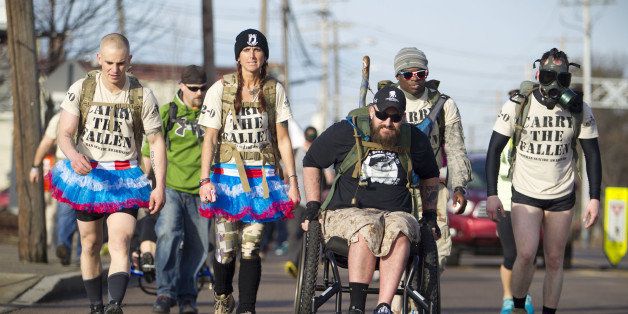
On August 29, the Department of Veterans Affairs' National Center for Posttraumatic Stress Disorder (PTSD) celebrated its 25th anniversary. For the past 25 years, the Center has been the leader in research and education helping those who are living with PTSD. I was privileged to be a part of the team that started the Center, and for being part of an ever-growing number of people who work to further understanding of the consequences of being exposed to a traumatic event.
The proposal to create the Center arose from the growing mental health needs of Vietnam Veterans and others, and the recognition in 1980 of the PTSD diagnosis by the American Psychiatric Association. In 1984 Congress directed VA to form a National Center for PTSD "to carry out and promote the training of health-care and related personnel in, and research into, the causes and diagnosis of PTSD and the treatment of Veterans for PTSD."
The Department of Veterans Affairs established the National Center for PTSD in 1989 as a center of excellence that would set the agenda for research and education on PTSD. The diagnosis of PTSD had been formalized only 9 years earlier, in the third edition of the American Psychiatric Association's Diagnostic and Statistical Manual of Mental Disorders. The new diagnosis -- for symptoms that had been observed in the medical literature after the Great London Fire in 1666 and had been described in more recent medical literature as railway spine, shell shock, and rape trauma syndrome -- significantly increased research on the consequences of exposure to horrific, life-threatening events. (DOI: 10.1002/jts.2490050310).
One of the most fundamental changes is recognition of the validity of the diagnosis itself. "When we started, PTSD was a controversial diagnosis," said Dr. Matthew Friedman, the Center's Senior Advisor and its Executive Director from 1989 through 2013. Some critics initially questioned whether PTSD was a "real" disorder, or merely a reflection of problems that had existed in a person prior to being traumatized. But, says Friedman, "The National Center's research and educational initiatives helped establish the scientific basis for PTSD, and disseminated that information globally."
Science and education are not the only factors that have increased understanding of PTSD. Disasters, wars, and other high-profile events have helped to raise public awareness and spark scientific inquiry. The terrorist attacks on 9/11/2001 had a particular impact. The number of articles on disaster in medical journals increased substantially from the 5 years before 9/11 to the 5 years after. The subsequent wars in Iraq and Afghanistan and disasters such as the 2011 tsunami and earthquake in Japan PTSD continue to keep PTSD on our minds.
Media reports on PTSD certainly have played a role in creating awareness. I think this is a good thing. Trauma survivors who have PTSD do not always understand their reactions, or even if they do, may not know how to get help. Being reminded about the symptoms of PTSD and what treatments are available and be the first step for a person with PTSD to get help.
Another fundamental change over the past 25 years is an expansion of knowledge about how to treat PTSD. In 1989, few effective treatments had been identified and many clinicians and their patients with PTSD thought that PTSD was a disorder that had to be "coped with." In 2014, there is a range of effective treatment options -- types of psychotherapies and medications -- that can help individuals with PTSD achieve meaningful improvements. Researchers are working to make existing treatments more effective and develop even more effective treatments. But today, in 2014, we can say, with conviction, that treatment works.
Technology also is playing a role by widening the distribution of information and access to treatment in multiple channels. For example, in 2011, the National Center partnered with the Department of Defense to create the first publicly-available VA mobile app, the award-winning PTSD Coach. AboutFace, an online video gallery of Veterans talking about living with PTSD and how treatment has turned their lives around, breaks down barriers to seeking care and misconceptions about PTSD and its treatment.
We are probably only at the beginning stages of figuring out how to use technology and social media to help individuals with PTSD. The stage of basic and clinical science is further developed, but even in those areas, there is much more to learn. In 2013, the American Psychiatric Association published revised criteria for the diagnosis of PTSD, reflecting advances in knowledge that have been gained since the last revision of the criteria in 1994 -- and generating new research aimed at understanding the implications of the changes. Although the Center has made great strides in research and education over the past 25 years, we look forward to making even greater progress in promoting understanding and advancing scientific knowledge about PTSD.